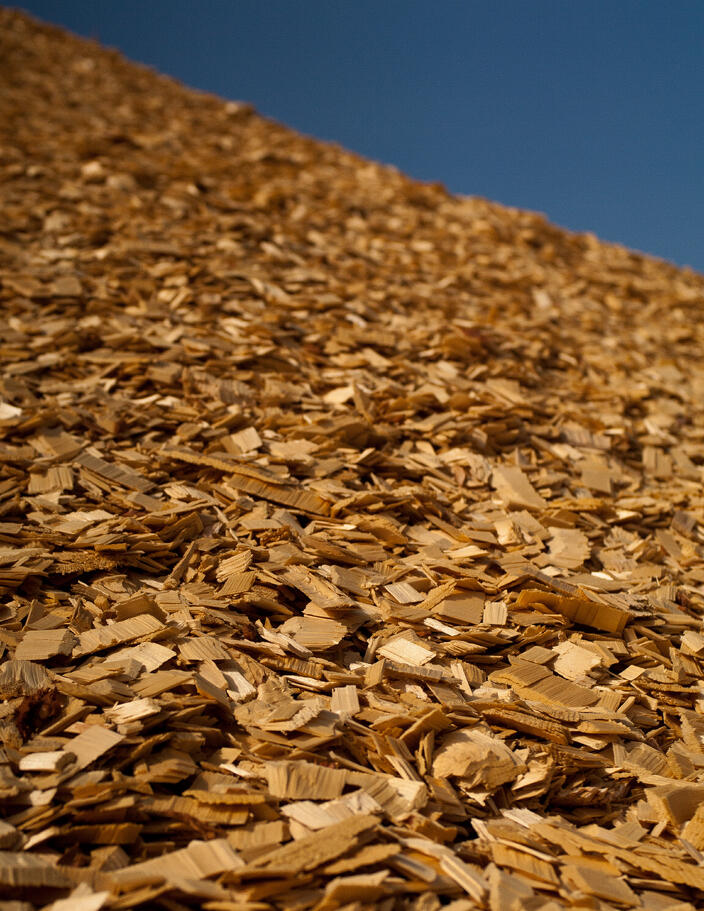The U.S. Environmental Protection Agency’s (EPA’s) plan to regulate carbon emissions is just the latest challenge facing the U.S. electric power system. Technological innovation is disrupting old ways of doing business and accelerating grid modernization. Earlier this year, AEE released Advanced Energy Technologies for Greenhouse Gas Reduction, a report detailing the use, application, and benefits of 40 specific advanced energy technologies and services. This post is one in a series drawn from the technology profiles within that report.

Solid biomass (e.g., wood chips or agricultural field residues) may be co-fired with fossil fuels (usually coal) in the same power plant to generate electricity. Co-firing plants are often a result of retrofitting an existing power plant. At low levels of co-firing (up to about 2% biomass), biomass can be simply mixed with coal on the fuel pile, and plant modifications are typically not needed. Higher amounts of biomass in the mix, usually up to about 15%, can be achieved by installing a separate feed system for the biomass. Another option for biomass co-firing is to gasify the biomass and then burn the resulting synthesis gas. This provides greater flexibility on the amount of biomass that can be burned and may have larger environmental benefits; however, it is also more expensive. Co-firing can also be accomplished by means of a dedicated biomass boiler that feeds the steam to the existing steam turbine. New power plants can be designed to burn any ratio of biomass to coal, typically using fluidized bed boilers, which have high fuel flexibility.
Mostly utilized in the United States and Northern Europe, there are about 230 co-firing power facilities in the world, with an estimated total biomass capacity of 1-10 GW (with the variability depending on the actual fraction of biomass in the fuel). Minnesota Power has two co-firing power plants, located in Duluth and Grand Rapids. The Duluth facility generates 50 MW with a 10-90 coal to biomass ratio, while the Grand Rapids plant generates 25 MW with a 15-85 coal to biomass ratio.
Even with separate feed systems, capital costs for retrofits to enable co-firing are low – 10% to 20% of the cost of a new dedicated biomass power plant. Nevertheless, the economic benefit varies greatly because the costs for biomass fuels depend on many factors, and each retrofit is unique. For example, the Tennessee Valley Authority estimates that it will save $1.5 million per year by incorporating biomass into its Colbert plant. When grown on a sustainable basis, the CO2 released from biomass combustion is considered by most authorities to be negated by the absorption from regrowth, though that view has been questioned. The International Renewable Energy Agency estimates that the replacement of 1% to 10% of the coal used in the world’s power plants with biomass could reduce CO2 emissions from 45 million to 450 million tons per year by 2035.
